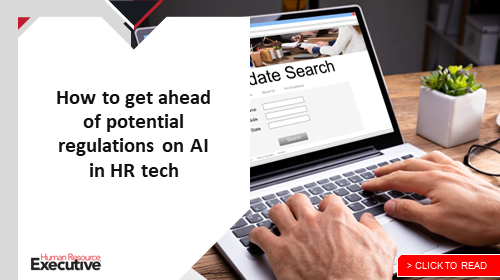Considering that “the cloud” has only existed for 15 years, major businesses have been relatively quick to embrace the cloud-based versions of their human capital management technology, despite some persistent challenges that remain, new research shows.
In addition, despite the high cost and complexity of typical cloud HCM systems, along with the expertise required to maintain them, some companies are using cloud HCM systems “out of the box,” according to a year-long study into these tools. The solutions also are no longer aimed at storing data and updating software but now are focused on the needs of the employee.
These are some of the findings of the work examining major enterprises and their use of cloud-based HCM tools, which was conducted by Tata Consultancy and The Josh Bersin Co. Bersin is a global industry analyst, HRE columnist and keynote speaker who will discuss the current and future state of the HR tech market, including HCM cloud tools, at the HR Technology Conference later this year in Las Vegas.
 The researchers studied the implementations—from selection through planning, installation and operation—of next-generation cloud-based HCM systems at 10 global enterprises: Adobe, AirAsia, Boeing, GE, JPMorgan Chase, Joann, Marks & Spencer, McDonald’s, Tata Chemicals and Target.
The researchers studied the implementations—from selection through planning, installation and operation—of next-generation cloud-based HCM systems at 10 global enterprises: Adobe, AirAsia, Boeing, GE, JPMorgan Chase, Joann, Marks & Spencer, McDonald’s, Tata Chemicals and Target.
“After years of work and billions spent, cloud-based HCM systems are at last tangibly transforming HR complexity, with a direct impact on the employee experience,” Bersin notes in announcing the report’s release on his website. “This is no longer just about cleaning up back-office IT or simplifying routine HR processes.”
HCM on the cloud serves employees.
Modern cloud implementations are addressing the needs of employees, unlike older cloud computing projects that were more focused on data storage and software integration.
“For years, HR software was used by back-office payroll and HR professionals but rarely by employees. These new implementations are different: They show how an employee-centric approach can turn the HCM platform into a valuable system for managers, workers, leaders and staff,” according to report author Kathi Enderes, senior vice president of research at The Josh Bersin Co.
JPMorgan Chase’s implementation of its Oracle-based platform, for example, was “entirely focused” on employee needs, Bersin writes. “Working as an integrated HR and IT team, they mapped out hundreds of ’employee journeys’ and then made sure each of these workflows was designed into the system. This seems like a lot of work, but it’s necessary.”
The report found that the most successful HCM cloud implementations of those studied relied on cooperation among the HR teams, IT teams and management to make business decisions.
“So these [cloud projects] are not just ‘software implementations,’” Bersin writes. “They are business transformations.”
HCM cloud tech is ready for new HR missions.
HCM solutions on the cloud now have the computing power to play a role in challenging AI-intensive projects that allow HR leaders to create what Bersin calls the “irresistible organization.” Along with powering initiatives that help HR attract and retain valuable talent, the cloud is now a key factor in an organization’s internal mobility efforts, which Bersin describes as a “huge priority” for forward-thinking companies dealing with the Great Resignation.
“You should be considering this in your implementation,” he writes. “Not only do most of these HCM systems have internal talent marketplace platforms, [but] they will open the door to vast improvements in internal recruiting.”
HCMs on the cloud need better data.
Data must be made available to all HCM solutions, which is no easy task. Today’s HCM systems are powerful, but they are typically difficult to change and update. A poor decision on cloud technology—and how it uses employee data—can have a profound impact on the success of an ambitious HR project.
 “We have Workday clients, for example, who have to ‘reimplement’ the system because these decisions were not made well,” Bersin writes. He adds that GE is rethinking its entire HCM implementation as it splits into three new businesses.
“We have Workday clients, for example, who have to ‘reimplement’ the system because these decisions were not made well,” Bersin writes. He adds that GE is rethinking its entire HCM implementation as it splits into three new businesses.
“Often the biggest reason for a new system is to get better data. McDonald’s, for example, has many dozens of global payroll systems to handle its employees and franchisees all over the world,” he writes. “One of their biggest priorities was to build an integrated employee database.”
Ultimately, the investment in the cloud and HCM solutions is paying off, Bersin notes. “This visible pay-off after extensive investments by companies in end-to-end HCM capabilities, managed via the cloud and more easily accessible, will be of great encouragement to all kinds of other organizations now embarking on or still going through their own transformation programs.”
Cloud-based HCMs will be a prominent topic at the 2022 HR Tech Conference. Register here.
The post 3 takeaways from Josh Bersin’s deep dive into cloud-based HCM tools appeared first on HR Executive.